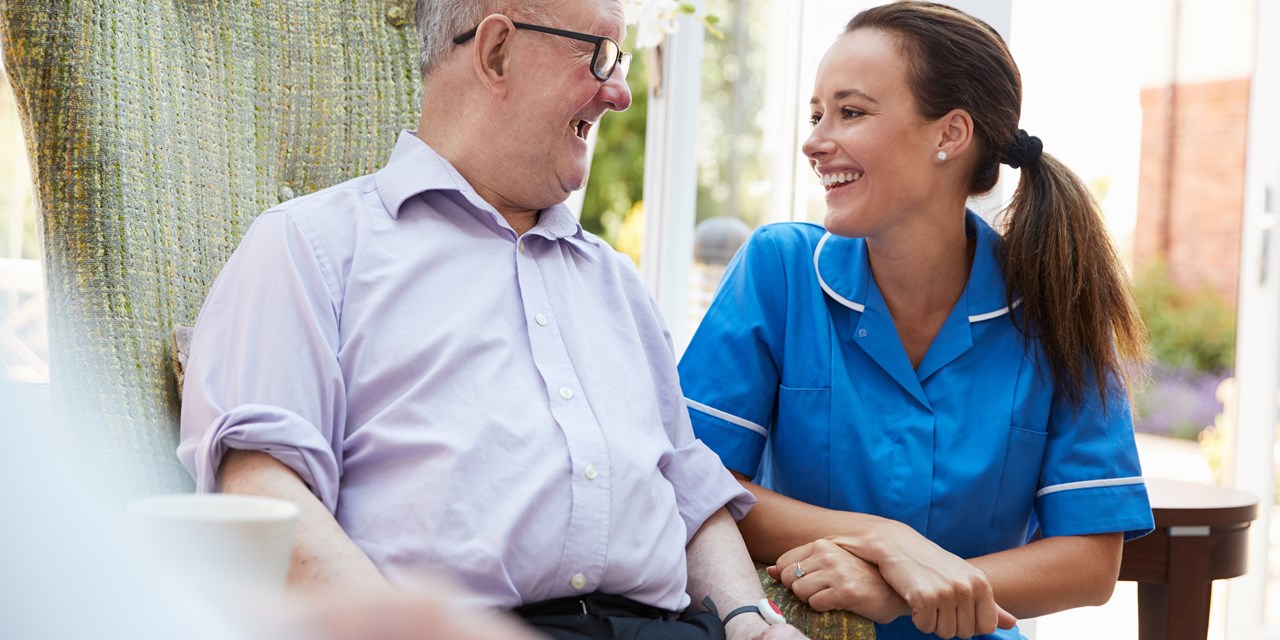Country Selector: United Kingdom
Stephen Cavanagh, long-term care expert for technology specialist, Ascom, discusses the increasingly important role of data analytics across residential care.

Imagine if we could predict a resident fall before it happened. Given research (1) suggests that care home residents are three times more likely to fall than older people living within the community, having this kind of foresight isn’t just convenient. It’s a game changer. One that could very realistically save lives.
At the very least it could significantly reduce resident hospitalisations, prevent ‘fall fear’ and help cut the £4.6m per day spent by the NHS treating fall related injuries for the over 65s.(2)
Until recently, practically all fall prevention strategies across social care relied heavily, if not entirely, on human intervention.
Care home staff are highly skilled and trained in monitoring residents. In being vigilant for the tell-tale signs that indicate a fall is likely - from paying closer attention to a resident who has suddenly become unsteady on his or her feet, to changes in posture and movement. But, relying entirely on carers, even before they became ever more stretched following the pandemic, was always an incredibly risky strategy.
Now, however, fall prevention strategies can include a powerful asset for preventative, proactive care. Data analytics.
In fact, monitoring can be tailored to match the specific health needs of a person and their specific behavioural patterns. Creating truly person-centred care. Not just in terms of near-real-time intervention and response, but also in terms of planning.
Smart monitoring technology is transforming the delivery of resident care. It’s also transforming how care homes operate, how staff work, and how new homes are being designed and built.
It’s providing carers with additional eyes and ears on residents, delivering a welcome extra layer of protection without impeding privacy.
The ability to track important health information is vital in ensuring the immediate care needs of residents. Near-real-time monitoring of vital health indicators, such as a drop in blood pressure or hydration levels, provides carers with the insight needed for early intervention.
The technology is also helping carers manage the delivery of care more effectively and with dignity.
Without smart monitoring, checking the welfare of a resident during the night meant staff entering their living area and disturbing their rest. Although necessary, night observations of this nature are intrusive.
With monitoring technology, such as wearables, pressure sensors and acoustic listening devices however, a resident can be checked by a carer throughout the night remotely.
Returning to fall prevention, for example, staff using smart monitoring are now able to set specific indicators that alert them of a potential fall risk. This could include monitoring whether the patient makes more frequent visits to the toilet, indicating a UTI – a common contributor to falls as the infection can cause low blood pressure and feeling lightheaded.
In fact, monitoring can be tailored to match the specific health needs of a person and their specific behavioural patterns. Creating truly person-centred care. Not just in terms of near-real-time intervention and response, but also in terms of planning.
Because reviewing data analytics can also highlight trends that allow carers to better formulate long-term personalised care strategies. Returning once more to the example of fall prevention – if the data analysis shows a subtle decline in the mobility of a resident over time, care home providers can consider if that person needs to relocate to a ground-floor living area, if specific exercises could be introduced into their daily routine or plan for the use of walking aids.
The data collected can help an individual in so many ways. Crucially, it can also be used for the benefit of population health too. For instance, reviewing the contributing factors leading up to an incident, say for a fall, can help inform procedural development. Ensuring that lessons learned are translated into preventative working practices.
There is a perceived downside. The data now at care providers’ fingertips is vast. And while that’s clearly a huge leap forward, it can also be overwhelming too. Deciding what data trends to analyse and how often, can be a challenge.
The reality is, however, that technology is taking care of that too. Using Artificial Intelligence (AI) algorithms, systems can actually help carers accurately navigate their way through the mass of data collected – presenting the details that matter.
For years the social care sector has been portrayed as behind the curve when it came to digital transformation. So, it’s exciting to see how some care home providers are using this level of insight and technological innovation. Something, almost certainly accelerated by necessity through the Covid-19 pandemic.
Today, care homes are making good use of the benefits digitisation can deliver – improving care provision and streamlining workflows so staff have more time with residents. Some are even using data insight to help better manage operational tasks such as ordering supplies and managing HR functions.
Sometimes the scale of what’s possible can make it seem unreal. But nothing could be more real than this. Thanks to smart monitoring technology, we can predict a resident falling and stop it from happening. And we can do this right now.
This article has been published in Tomorrow's Care. Click here to read.
1. Falls in the Care Home: 2018: https://www.nottingham.ac.uk/research/groups/communityrehabilitation/projects/falls-in-care-homes-finch.aspx
2. Age UK: 2021: https://www.ageuk.org.uk/latest-press/archive/falls-over-65s-cost-nhs/